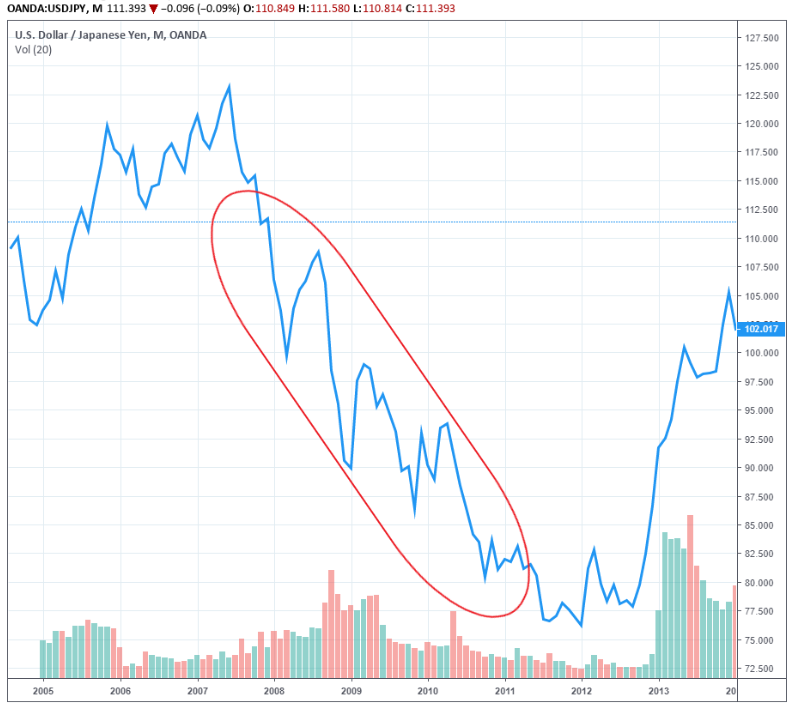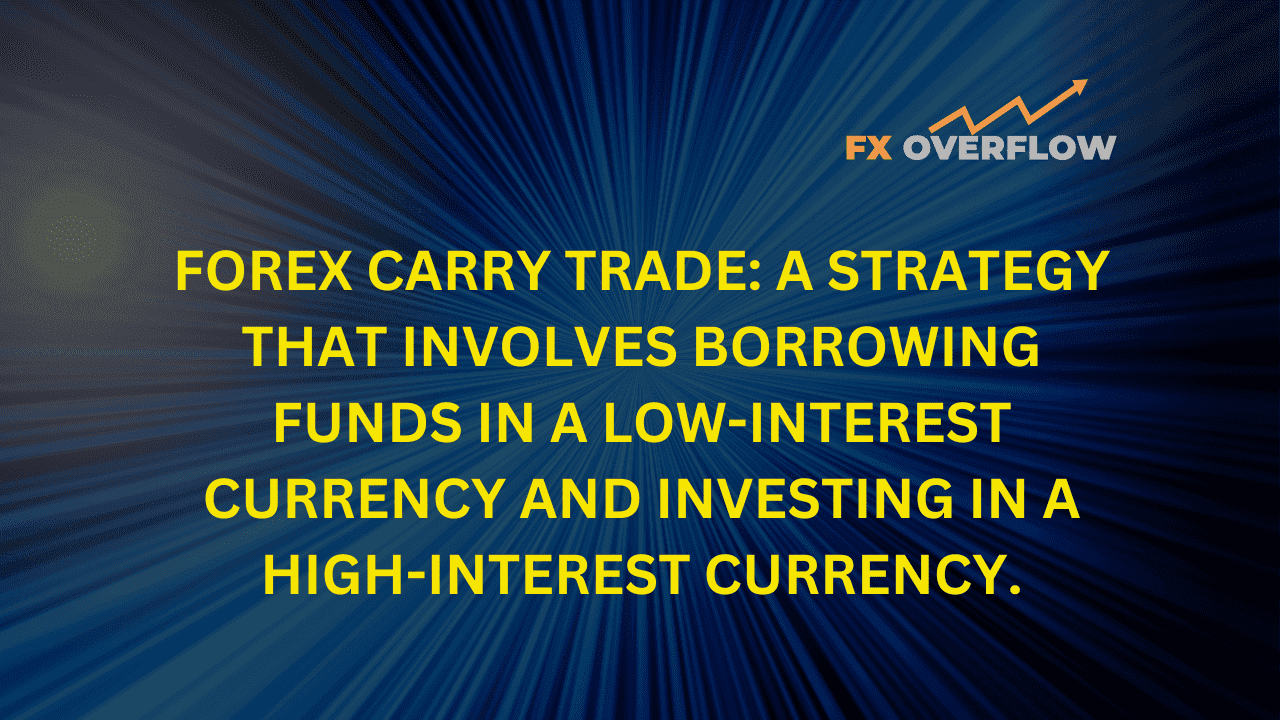Forex carry trade: A strategy that involves borrowing funds in a low-interest currency and investing in a high-interest currency.
The Forex carry trade is a popular trading strategy used by investors to capitalize on interest rate differentials between currencies. This strategy involves borrowing funds in a currency with a low-interest rate and using these funds to invest in a currency with a higher interest rate. The goal is to profit from the interest rate differential and potential currency appreciation.

In this article, we will explore the Forex carry trade in detail, covering its benefits, risks, best practices, and expert insights. Whether you are a seasoned trader or a newcomer to the world of Forex, this guide will equip you with the knowledge you need to make informed decisions and potentially earn high returns.
Table Content
1. What is the Forex Carry Trade?
2. Benefits of Forex Carry Trade
3. Risks Associated with the Forex Carry Trade
4. How to Identify Suitable Currency Pairs for Carry Trade
5. Steps to Execute a Forex Carry Trade
6. Expert Insights: Real Traders' Experiences
7. FAQs about Forex Carry Trade
8. Footnote
What is the Forex Carry Trade?
The Forex carry trade is a speculative strategy wherein traders borrow funds in a currency with a low-interest rate, often referred to as the "funding currency," and invest the borrowed funds in a currency with a higher interest rate, known as the "target currency." The difference between the interest rates of the two currencies generates a positive carry, which can result in profit for the trader.
Benefits of Forex Carry Trade
The Forex carry trade offers several advantages that make it an attractive option for investors:
- High Potential Returns: The main allure of the carry trade is the potential for high returns. If the target currency appreciates against the funding currency, traders can earn both from the interest rate differential and the currency's value appreciation.
- Diversification: By engaging in the carry trade, traders can diversify their portfolios beyond traditional investments, such as stocks and bonds, thereby reducing overall risk.
- Long-Term Strategy: The carry trade is often considered a long-term strategy, allowing traders to hold positions for extended periods, taking advantage of sustained interest rate differentials.
- Flexibility: Traders can choose from a wide range of currency pairs, offering flexibility in selecting the most favorable combinations based on interest rate differentials and market conditions.
Risks Associated with the Forex Carry Trade
While the Forex carry trade offers potential rewards, it also comes with inherent risks that traders should be aware of:
- Currency Volatility: Exchange rates can be highly volatile, and fluctuations in currency values can erode potential profits or even lead to losses.
- Interest Rate Changes: Central banks can adjust interest rates, impacting the interest rate differential between currency pairs and affecting the profitability of carry trades.
- Market Sentiment Shifts: Economic and geopolitical events can influence market sentiment, leading to sudden shifts in currency values and interest rate expectations.
- Leverage Risk: Using leverage to amplify potential returns can also amplify losses, leading to substantial financial risks.
How to Identify Suitable Currency Pairs for Carry Trade
Choosing the right currency pairs is crucial for a successful carry trade strategy. Here are some factors to consider when selecting currency pairs:
- Interest Rate Differential: Look for pairs with a significant interest rate gap between the funding currency and the target currency, as this will determine the potential carry returns.
- Economic Outlook: Analyze the economic outlook of both countries involved in the currency pair. Strong economies with stable growth prospects are more likely to attract investments.
- Stability and Risk Profile: Evaluate the political and economic stability of the countries and assess their risk profiles. Safer economies are generally more attractive for carry trades.
- Market Sentiment: Keep an eye on market sentiment and trends to gauge potential currency movements.
Steps to Execute a Forex Carry Trade
Implementing a carry trade strategy involves several steps:
- Research and Analysis: Conduct thorough research on potential currency pairs and their economic fundamentals. Analyze interest rates, economic indicators, and central bank policies.
- Selecting the Currency Pair: Based on your research, choose the most suitable currency pair that meets your risk tolerance and investment goals.
- Opening the Trade: Open a position by borrowing funds in the funding currency and simultaneously investing in the target currency.
- Monitor and Manage: Continuously monitor the trade, including interest rate changes, economic developments, and currency market trends. Use risk management tools to protect your capital.
Expert Insights: Real Traders' Experiences
To gain further insights into the Forex carry trade strategy, we reached out to experienced traders who have successfully implemented this approach. Their experiences highlight the importance of thorough research, disciplined risk management, and a long-term outlook.
"I have been utilizing the carry trade strategy for several years now, and it has been a key contributor to my trading success. I focus on currency pairs with stable economies and positive interest rate differentials, and I've found that patience is crucial in this game." - Mark T., Professional Forex Trader.
"The carry trade has provided me with a steady stream of income over time. To manage risk, I use conservative leverage and set stop-loss orders to protect my capital. It's essential to stay informed about economic events that may impact my trades." - Sarah K., Currency Trader.
FAQs about Forex Carry Trade
Q: What is the minimum capital required for a carry trade?
A: The minimum capital required depends on the broker's margin requirements and the size of the position. It's essential to start with an amount you can afford to lose and avoid over-leveraging.
Q: Can the carry trade lead to losses?
A: Yes, like any trading strategy, the carry trade carries risks, including potential losses. Currency values can fluctuate, impacting returns.
Q: How do central bank policies affect carry trades?
A: Central bank decisions on interest rates can significantly impact carry trades. Interest rate changes can alter the interest rate differential between currency pairs, affecting profitability.
Q: Is the carry trade suitable for beginners?
A: While the carry trade can be lucrative, it also involves risks. Beginners should start with a thorough understanding of Forex trading, risk management, and currency pair analysis.
Q: Can political events affect carry trades?
A: Yes, political events can influence currency values, potentially impacting carry trades. Traders must keep abreast of geopolitical developments.
Q: Is the carry trade considered a passive or active trading strategy?
A: The carry trade is typically regarded as a passive trading strategy, as positions are often held for an extended period to benefit from interest rate differentials.
Footnote
In Summary, the Forex carry trade strategy is an enticing opportunity for investors seeking to profit from interest rate differentials between currencies. While it offers potential rewards, it also carries inherent risks, making thorough research, disciplined risk management, and long-term planning vital for success.
Remember that the Forex market is dynamic, and staying informed about economic developments and market trends is crucial. By following expert insights and applying sound trading principles, you can harness the power of the Forex carry trade strategy to potentially achieve impressive returns on your investments.











Discussion